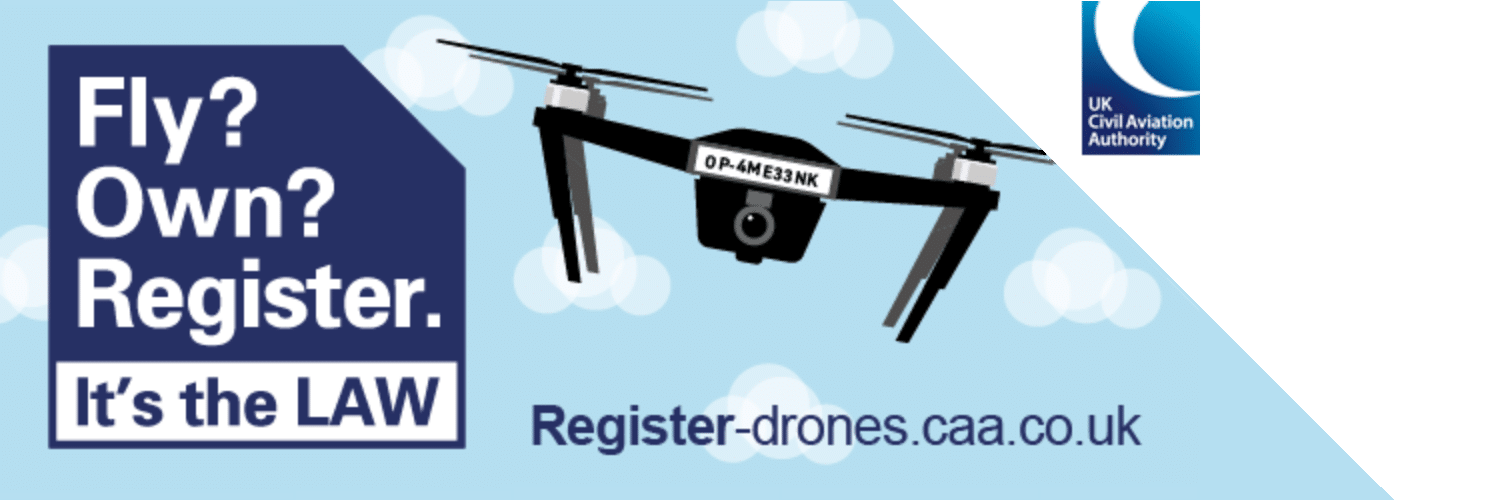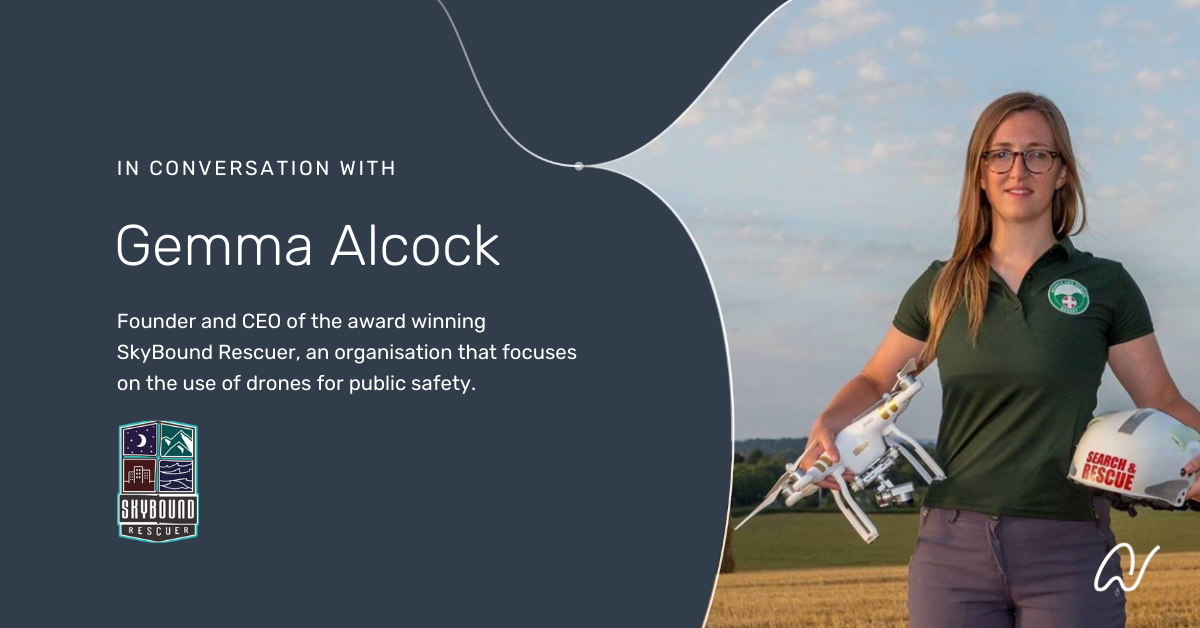In Conversation With
Each week, Airwards chats to someone in the drone industry doing incredible work. We uncover what they do, what makes them tick, where they see the drone industry headed, and discuss positive drone use.
In our latest conversation we speak to James Bell, Acting Innovation Strategy Lead at CAA Innovation Hub. James started out in the MOD a decade ago, and worked for the DfT before moving to the CAA. With a passion for engineering, aviation and technology, James discusses the need for the CAA Innovation Hub and the latest changes in drone regulation. He also highlights why Airwards’ use case approach is key to wider public acceptance...
“The use case approach of Airwards is key. I’ve always felt that the power of the ‘use case’ is fundamental to progress innovation and drive the maturity of drone technology, because this helps people to understand and connect with the technology. The use case provides that catalyst for education, engagement and collaboration.”
1 | What is your background?
I trained as an aerospace engineer at the University of Surrey, and during my placement year with the Defence Science and Technology Laboratory, I got hooked on the defence side of aviation. This led me to do a number of different engineering roles in the Ministry of Defence, which gave me a holistic understanding of designing, procuring and maintaining aircraft. I then moved onto the Department for Transport where - amongst other things - I was responsible for engaging with the Centre for Connected Autonomous Vehicles, mapping out how new technologies fitted into existing road vehicle regulatory frameworks and how we could enable UK testing before they got approved by the global regulations.
Eventually I realised I missed the aviation side of work, so I moved into a role as Head of Drones Strategy for the DfT. I spent a lot of time working with the CAA and eventually in 2019, I moved across to join the new CAA Innovation Hub.
2 | How did the CAA Innovation Hub come about?
When drones evolved from predominantly large military aircraft to small items you could buy off the shelf for Christmas, the CAA had to develop a regulatory framework for these new types of aircraft from scratch. The first edition of the CAA’s policy and guidance, CAP722, was published in 2002. As a result of that journey, the CAA realised they needed to consider innovation – and their response to it – more carefully.
Subsequently in 2018, the Department for Business, Energy & Industrial Strategy (BEIS) released the Regulators’ Pioneer Fund as a means of driving forward innovation in the public sector. Building on the Innovation strategy that had been developed previously, the CAA bid for a portion of the funding and thus the CAA Innovation Hub was born.
3 | What is the Innovation Hub’s role?
There are three main areas we handle at the Innovation Hub:
Innovation Gateway - Making it easier for innovators to access CAA expertise, guidance, and viewpoints on regulations and providing a focal point of contact and information.
Innovation Sandbox - Helping innovators maximise regulatory readiness for the demonstration of their aviation systems by testing them in safe environments and learning how they address regulatory challenges.
Regulatory Lab - Accelerating the development of new policies and regulations by anticipating regulatory challenges in areas of innovation, then defining the requirements for new policies and regulations.
Ultimately, we want to encourage innovation to be safe, secure, fair for consumers and environmentally friendly. There’s also an international and broader UK economic aspect to the Innovation Hub – if we can establish the UK as a place that welcomes aviation innovation, that has huge benefits for the economy.
4 | How have regulations changed in the past couple of years?
The UK has been a prominent voice in the development of the latest European drone regulatory framework, which aims to create a more harmonised approach across Europe. Those regulations will come into force in the UK at the beginning of 2021. The biggest change as a result will be a more structured approach to assessing drone operations, regardless of whether it’s a commercial operation or not, by instead focusing on the safety and risk. This is an important move forward.
Very recently the DfT and CAA came together and created a grant scheme for Electronic Conspicuity devices, to encourage both drone and General Aviation aircraft users to fit devices that enable them to be seen electronically by other users in the air and on the ground, rather than just relying on the naked eye. There are valuable safety benefits for everyone involved so we’ve been working with organisations who provide these devices to make sure they meet the right technical standards.
5 | What are your thoughts on Airwards?
There is a lot of optimism in what can be achieved by drone technology. We need to capture this enthusiasm but we also need new ways to tackle the challenges presented by innovations. If someone overcomes these challenges with a novel, proven use case, and this success can be shared openly across sectors, then it motivates others to know that these challenges are not insurmountable.
The use case approach of Airwards is key. I’ve always felt that the power of the ‘use case’ is fundamental to progress innovation and drive the maturity of drone technology, because this helps people to understand and connect with the technology. The use case provides that catalyst for education, engagement and collaboration.
Adding to this, the ‘drones for good’ aspect is also crucial to bring people on the journey of progression together – if you can see a broad public benefit in something you’re more likely to support and engage with it. Demonstrating those use cases and highlighting good practices and people doing really good things, as I hope Airwards will, brings everybody on that important journey together.
6 | What are the latest positive use cases you have seen or been involved in?
As the CAA’s Innovation team, we’re always scanning the horizon for new use cases so we can make sure our innovative programmes are relevant for what might affect aviation in future. I recently read about drones planting thousands of trees by dropping biodegradable seed pods, which totally captured my attention because it’s a great example of how drone technology can be coupled with other specialisms to create an outcome that has great potential for the environment.
At the CAA, we’ve also been supporting a number of exciting use cases, such as the Skyports’ consortia operating in Scotland. During the first COVID lockdown, Skyports delivered medical supplies in a matter of hours from Oban to the Isle of Mull - a small but powerful example showing the benefits that drones can bring for remote communities.
About James
James Bell is the Acting Innovation Strategy Lead at CAA Innovation Hub. James started out in the MOD a decade ago, and worked for the DfT for a number of years before moving to the CAA in 2019.
Connect with James on LinkedIn and visit CAA Innovation Hub as well as their information, policy and guidance on Unmanned Aircraft Systems for more information.
















